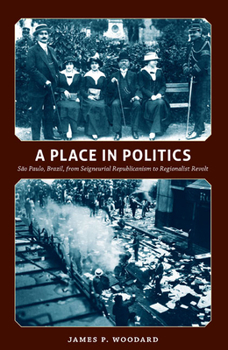A Place in Politics: São Paulo, Brazil, from Seigneurial Republicanism to Regionalist Revolt
Select Format
Select Condition 
Book Overview
Woodard's fine-grained political history proceeds chronologically from the final years of the nineteenth century, when S o Paulo's leaders enjoyed political preeminence within the federal system codified by the Constitution of 1891, through the mass mobilization of 1931-32, in which S o Paulo's people marched, rioted, and eventually took up arms against the national government in what was to be Brazil's last great regionalist revolt. In taking to the streets in the name of their state, constitutionalism, and the "civilization" that they identified with both, the people of S o Paulo were at once expressing their allegiance to elements of a regionally distinct political culture and converging on a broader, more participatory public sphere that had arisen amid the political conflicts of the preceding decades.





